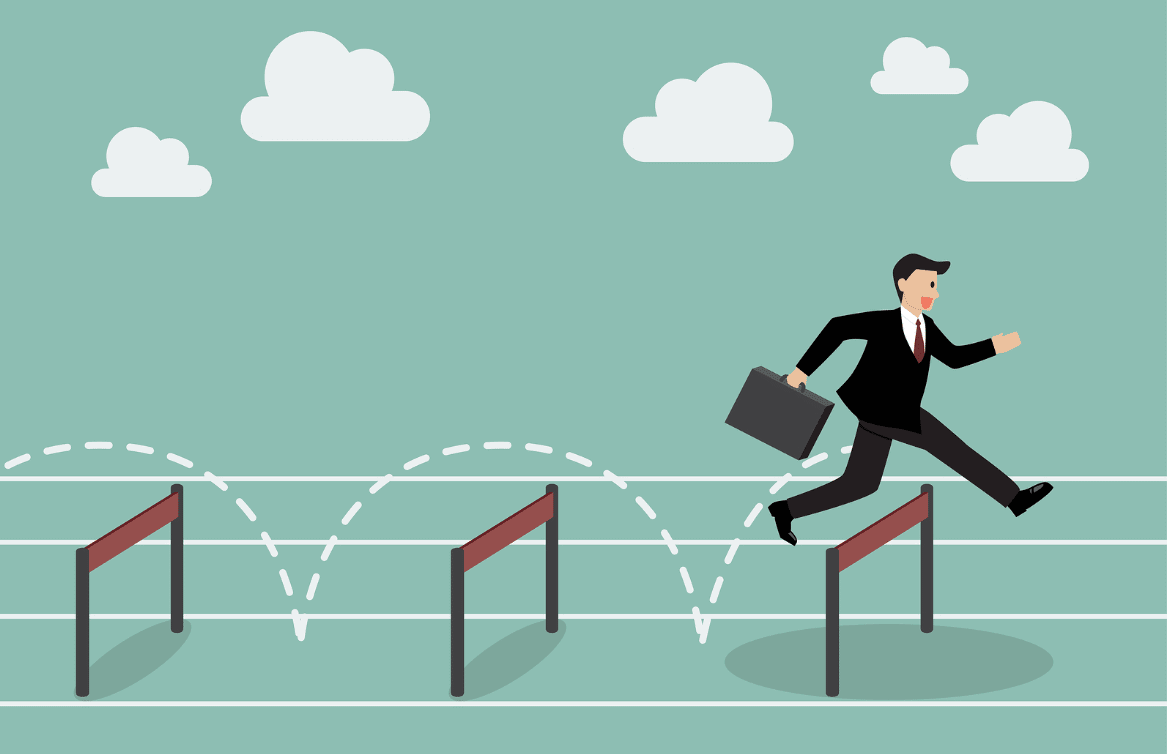
Key Takeaways
- Modern B2B sales development is harder than it looks: buyers prefer rep-free, digital journeys (61%) and actively avoid irrelevant outreach (73%), so lazy volume tactics are now actively hurting pipeline.
- The biggest levers aren't more dials or emails, but better strategy: a tight ICP, clean data, true personalization, and multichannel sequences that match how your buyers actually research and buy.
- SDRs spend only about one-third of their time selling, with the rest eaten by admin and tool-wrangling, while average quota attainment hovers under 50%-a brutal combo if you don't redesign the role.
- Improving list quality, tightening messaging, and standardizing SDR-to-AE handoffs are low-glamour plays that quickly improve meeting quality, conversion rates, and morale.
- SDR turnover sits north of 30% with average tenure around 14-18 months; if you don't fix burnout, coaching, and career paths, you'll be stuck in a permanent ramp cycle.
- Cold outreach benchmarks are sobering—5-7% reply rates for email and ~2-3% dial-to-meeting for calls-but top performers crush these by focusing on relevance, sequencing, and account coverage, not just volume.
- When you don't have the time, expertise, or talent bench to fix these 17 hurdles internally, a specialized partner like SalesHive—100,000+ meetings booked for 1,500+ clients-can shortcut years of trial and error.
Why B2B Sales Development Feels Harder Than Ever
B2B sales development didn’t suddenly “get worse”—the buyer changed, and most outbound systems didn’t. When 61% of B2B buyers prefer a rep-free experience and 73% actively avoid suppliers who send irrelevant outreach, generic sequences stop being merely ineffective and start becoming a brand liability. That’s why the old playbook of “more dials, more emails” now creates noise, not pipeline.
At the same time, SDR teams are being asked to do more with less. If sellers only spend 34% of their time actually selling, every extra internal task—manual logging, list cleanup, tool wrangling—directly steals capacity from conversations and follow-up. The result is predictable: teams feel busy, metrics look active, and revenue outcomes lag.
This is Part One of a deeper breakdown of the hurdles that quietly kill pipeline in modern outbound. The goal isn’t to shame activity or glorify hustle; it’s to isolate the failure points that compound—targeting, data, relevance, channel mix, and sequencing—then fix them with repeatable operating standards. Whether you run an in-house SDR function or work with an outsourced sales team, the fundamentals are the same.
Digital-First Selling: More Channels, Less Patience
The market is now structurally digital-first, and SDRs can’t treat that as a minor workflow tweak. Gartner projected that 80% of B2B sales interactions would occur in digital channels by 2025, which raises the bar on email, social touches, and remote conversations. If your outbound sales agency motion still assumes phone-first or “field rep saves the day,” the math won’t work.
Cold outreach benchmarks are sobering because inboxes and voicemail are both crowded. In 2024, the average cold email reply rate fell to 5.8%, and other datasets put typical performance around 36% opens and 7% replies—often requiring roughly 306 cold emails to create a single lead. If your targeting and messaging are even slightly off, volume simply amplifies the miss.
Phone outreach is just as unforgiving when lists and positioning are weak. It can take 18+ dials to connect with one prospect, and only about 2.3% of cold call attempts convert into a booked meeting—numbers that should push you toward tighter ICP rules and better account coverage, not mindless dialing. The best cold calling services win by being relevant and persistent, not by being loud.
| Outbound Channel | Reality Check Benchmark |
|---|---|
| Cold email | 5.8% average reply rate (2024) |
| Email outreach (large datasets) | 36% open rate, 7% reply rate, ~306 emails per lead |
| Cold calling | 18+ dials per connect; ~2.3% dial-to-meeting |
| Sales cycle context | Median cycle length ~120 days (2024) |
Treat Your ICP Like a Product, Not a Slide
Most SDR programs fail before the first touch because the ICP is vague and overly optimistic. If your “ICP” is basically marketing’s TAM slide with a title filter, you’ve built a machine that rewards contacting the wrong people quickly. The fix is to rebuild your ICP from CRM reality—win/loss data, time-to-close, churn risk, and deal size—then turn it into prospecting rules your team and your sdr agency partners can’t accidentally ignore.
A practical step that improves performance fast is operationalizing a negative ICP. Create a “Do Not Prospect” list from segments that consistently no-show, never convert, or churn quickly, and remove them from standard cadences before they poison deliverability and morale. This also protects your brand in a world where 73% of buyers actively avoid irrelevant outreach.
Once the ICP is real, you can message with specificity instead of generic value props. Strong outbound is less about clever copy and more about plausible relevance: the prospect’s role, a believable business problem, and a reason to engage now. That’s how a b2b sales agency (or an in-house team) escapes commodity response rates and creates conversations that can survive a 120-day sales cycle.
Operationalize Data, Relevance, and Multichannel Cadences
Weak account and contact data is the silent tax on outbound performance. When SDRs have to fix titles, guess the owner, or chase missing direct dials, they’re spending the scarce 34% “selling time” on admin that should be automated or centralized. Treat list quality like production infrastructure: clear standards (verified email, role accuracy, LinkedIn URL, last-verified date) and a single owner for enrichment and hygiene.
Relevance is the next bottleneck, and personalization has to be more than a merge field. The simplest standard that works across industries is to personalize the first one to two sentences and the CTA based on specific signals (hiring, tech stack, product changes, compliance deadlines, leadership shifts), then keep the rest of the message tight. AI can help with first drafts, but humans should still apply the last 10–20% of judgment so your cold email agency motion doesn’t devolve into templated spam.
Finally, stop running single-channel outreach in a hybrid world. Standardize two to three baseline multichannel sequences per ICP—typically 10–15 touches over 20–30 days—mixing email, b2b cold calling, and LinkedIn touches, then allow smart adaptation by persona. This is where cold calling companies and linkedin outreach services become complementary rather than competing tactics, and where “activity” starts turning into repeatable meetings held.
If you want more pipeline, don’t ask for more effort—reclaim time, tighten targeting, and make every touch feel like it was meant for that buyer.
Make SDR Time a Board-Level Metric (Because It’s Your Real Capacity)
If reps only spend 34% of their week selling, “increase activity” is often the wrong lever. Your first move should be a one-week time and task audit: have a small sample of SDRs track time in 30-minute blocks, then classify it into selling versus non-selling work. Within 30 days, eliminate the worst offenders—manual CRM cleanup, redundant meetings, and list formatting that should never sit with frontline sellers.
This is also where sales outsourcing can be used to specialize, not abdicate. A strong outsourced sales team can handle list building services, daily outbound volume, and disciplined follow-up, while you keep ownership of ICP, qualification criteria, and message-market fit. In our work at SalesHive, we’ve found that clarity on “what good looks like” is what makes an outsourced SDR program feel like an extension of your org, not a black box.
Design the role so it’s sustainable, not disposable. With roughly 34% turnover and typical tenure around 14–18 months, many teams live in a permanent ramp cycle that prevents compounding skill. Career paths, coaching, and cleaner systems aren’t “nice-to-haves”; they’re how you keep your best cold callers productive long enough to matter.
Common Mistakes That Quietly Kill Pipeline Quality
One of the most expensive mistakes is letting a broad TAM definition become the SDR targeting blueprint. Marketing decks are designed to describe market opportunity, not conversion probability, so SDRs end up calling “anyone with a pulse” and wondering why outcomes lag. In a world where it can take 306 emails to create one lead, bloated lists don’t create more pipeline—they create more waste.
Another common failure is measuring SDRs almost exclusively on raw activity volume. If all you celebrate is dials and sends, people will game the metric with low-quality touches, and you’ll pay for it through deliverability, complaint rates, and low meeting show rates. Balance activity with outcomes (positive replies, meetings held, pipeline created) and quality signals (bounce rates, spam complaints, and the ACV of sourced opportunities).
The third mistake is running email-only or call-only in a hybrid environment. Email deliverability shifts, spam rules tighten, and phone connect rates keep sliding—so relying on a single lane is fragile. The fix is to treat multichannel cadence design as a core “sales development agency” competency, and to report performance by channel combination so you can see which mix actually works per ICP.
How Top Teams Improve: Testing, Coaching, and Clean Handoffs
High-performing teams score sequences on learning, not just meetings booked. Keep A/B tests disciplined by changing one variable at a time (subject line, opener angle, CTA, or proof point), and keep cohorts small enough that results are interpretable. Over time, your system gets smarter, and you can outperform “average” reply rates like 5.8% without resorting to spam tactics.
Coaching also needs to be treated like skill development, not random call reviews. Implement a weekly rhythm where managers review a few calls and email threads per rep around a single theme—openers, discovery, or objection handling—then assign micro-goals for the next week. This “coach like athletes” approach is one of the fastest ways to lift conversion when cold call services are already operating under harsh benchmarks like 2.3% dial-to-meeting.
Finally, tighten the SDR-to-AE handoff so pipeline doesn’t leak after the meeting is booked. Define a clear “sales-ready” contract: what qualifies, what context must be captured, and how no-shows or re-qualification are handled. Document it, bake it into CRM fields, and track violations on both sides so the process doesn’t collapse into finger-pointing.
Next Steps: Build, Buy, or Run a Hybrid Motion in 2026
The best next step depends on where your constraints are: leadership bandwidth, speed-to-pipeline, or internal hiring capacity. If you’re trying to hire SDRs while also building infrastructure (data standards, sequences, reporting, coaching), you can lose quarters just getting to baseline competency. That’s why many teams evaluate a 90-day pilot with a specialized partner to compare fully-loaded in-house costs against a flat-rate model for cost-per-qualified-meeting.
If you explore sales outsourcing, keep the scope tight: one ICP, one region, and shared KPIs tied to meetings held and pipeline generated, not just volume. The goal is to determine whether the partner operates like a true cold calling agency and cold email agency with strong process, or whether they’re simply renting activity. When outsourcing is done well, it accelerates learning and frees internal teams to focus on positioning, product marketing, and closing.
No matter which route you choose, start with targeting and data if you feel overwhelmed. A fuzzy ICP and dirty lists quietly poison every other metric, from reply rates to connect rates to meeting quality. Fix that foundation, then standardize multichannel cadences, reclaim SDR selling time, and you’ll build an outbound engine that can thrive even when buyers want digital journeys and sales cycles stretch past 120 days.
Sources
- Gartner (61% rep-free preference; 73% avoid irrelevant outreach)
- Gartner (80% of B2B sales interactions in digital channels by 2025)
- Salesforce State of Sales (time spent selling)
- Belkins (2024 cold email reply rate)
- Belkins (email open/reply benchmarks; emails per lead)
- Salesso (cold calling benchmarks)
- Salesso (SDR turnover; tenure)
- B2B Marketing Zone (median B2B sales cycle length)
- McKinsey (hybrid B2B buying and selling)
📊 Key Statistics
Expert Insights
Treat Your ICP Like a Product, Not a Slide
Your ideal customer profile shouldn't live in a deck; it should drive list rules, messaging, and disqualification criteria. Rebuild your ICP from win/loss data and CRM history, then codify it into your list-building tools and SDR playbooks so reps literally *can't* spray and pray.
Make SDR Time a Board-Level Metric
If reps only sell ~34% of the time, your real lever is reclaiming hours, not just pushing harder. Instrument SDR calendars and workflows, then ruthlessly automate or outsource anything that isn't outreach, conversations, or research tied to live opportunities.
Score Sequences on Learning, Not Just Meetings
Yes, meetings booked is the North Star, but great teams also measure what each sequence teaches them about subject lines, hooks, and buyer objections. Run controlled A/B tests, keep cohorts small, and roll winning patterns into standardized plays so your system gets smarter every month.
Coach SDRs Like Athletes, Not Order-Takers
Random call reviews and generic feedback don't move the needle. Implement weekly, theme-based coaching (e.g., openers, discovery, objection-handling), review specific clips, and assign micro-goals for the next week so every rep is deliberately practicing the skill that will move their numbers next.
Use Outsourcing to Specialize, Not Abdicate
The best outsourced SDR partners don't replace your strategy; they give you specialized execution capacity. Keep ownership of ICP, message-market fit, and qualification criteria in-house, while leveraging a partner for list building, daily outbound volume, and disciplined follow-up at scale.
Common Mistakes to Avoid
Letting marketing's TAM slide become the SDR targeting blueprint
Marketing decks tend to overstate who you can 'help', so SDRs end up calling anyone with a pulse. That bloats lists, tanks reply rates, and fills calendars with poor-fit meetings that never convert.
Instead: Build a data-driven ICP from your best 50-100 closed-won deals and your worst churned accounts, then lock those firmographic and behavioral rules into list-building and routing before a single outbound touch goes out.
Measuring SDRs almost exclusively on raw activity volume
If all you celebrate is dials and emails, your team will game the metric with low-quality touches that annoy buyers and poison your domain reputation.
Instead: Balance activity targets with outcome metrics-positive replies, meetings held, pipeline generated-and quality metrics like spam rates, bounce rates, and ACV of sourced opportunities.
Treating SDRs as disposable 'quota coverage' instead of a talent pipeline
With 34%+ turnover and 14-18 month tenure, failing to invest in career paths and coaching means you constantly lose your best-ramped reps right as they become productive.
Instead: Create explicit 12-24 month progression paths, structured enablement, and clear promotion criteria; track internal promotions from SDR to AE as a core success metric for your sales development program.
Running single-channel outreach (email-only or call-only) in a hybrid world
B2B buyers now split their time roughly evenly across in-person, remote, and digital self-serve channels, so leaning on just one touch type leaves you invisible to two-thirds of their journey.
Instead: Standardize multichannel cadences that mix email, phone, and LinkedIn, and let SDRs adapt channel mix by persona and segment while you monitor performance by channel combo.
Waiting until everything is 'perfect' before exploring outsourcing
You lose quarters trying to build lists, cadences, and dashboards from scratch while competitors are already learning from live conversations.
Instead: Pilot with an experienced partner for a narrow ICP or region, use their process and benchmarks to accelerate your own learning, and then decide what should remain in-house vs. outsourced.
Action Items
Run a one-week SDR time and task audit
Ask a small sample of SDRs to track their time in 30-minute blocks, then categorize into selling vs. non-selling tasks. Use the data to kill or automate the worst offenders (manual logging, list cleanup, basic research) within 30 days.
Narrow and operationalize your ICP into a 'Do Not Prospect' list
From your CRM, identify segments with poor conversion or high churn and explicitly label them as 'DNP' in your data tools. Train SDRs and any outsourced teams to avoid or deprioritize those segments, and remove them from standard sequences.
Standardize 2–3 baseline multichannel cadences per ICP
For each core segment, define a 10-15 touch sequence over 20-30 days that mixes email, phone, and LinkedIn. Lock subject lines, touch timing, and core messaging, then A/B test only one variable at a time per cohort.
Install a weekly call and email review rhythm
Have managers or senior reps review 3-5 calls and 5-10 email threads per SDR each week, focused on one coaching theme. Document 'before vs. after' snippets and playbooks so improvements become team standards, not one-off fixes.
Define and document your SDR-to-AE handoff contract
Agree on what qualifies as a 'sales-ready' meeting, what context SDRs must capture, and how no-shows or re-qualification are handled. Publish the contract, put it in your CRM fields, and track violations both ways.
Evaluate one outsourced option against your internal economics
Model fully-loaded SDR costs (salary, tools, management) and compare to a flat-rate outsourced model. Run a 90-day pilot with tight scope and shared KPIs to see which model produces better cost-per-qualified-meeting for your ICP.
Partner with SalesHive
Instead of forcing you to assemble a patchwork of freelancers and tools, SalesHive gives you dedicated US‑based and Philippines‑based SDR pods, an AI‑powered platform, and proven playbooks under one roof. Their teams handle the unglamorous heavy lifting: building and cleaning prospect lists, crafting and testing multichannel sequences, running day‑to‑day cold calling and email outreach, and tracking performance in real‑time dashboards that plug into your CRM. Their eMod personalization engine uses public prospect and company data to generate highly tailored email openers at scale, which helps push response rates well above generic benchmarks.
Because SalesHive works on flat‑rate, month‑to‑month engagements with risk‑free onboarding, you can treat them like an extension of your sales org rather than a long‑term bet. For companies that recognize these 17 hurdles but don’t have the time, leadership, or talent bench to fix them alone, SalesHive offers a way to stand up a modern, metrics‑driven outbound engine in weeks instead of quarters.
❓ Frequently Asked Questions
What's a realistic benchmark for SDR cold outreach performance in 2025?
Across large datasets, B2B cold email reply rates often land around 5-7%, and it can take roughly 300 emails to generate a single lead, while cold calling sees about 18+ dials per connect and ~2-3% dial-to-meeting success. Those averages are not targets-they're table stakes. Well-run programs routinely beat them by focusing on tight ICP definition, multi-threading 2-4 contacts per account, and running multichannel sequences instead of one-off blasts.
How many touches should an SDR make before giving up on a prospect?
Most teams still give up far too early. Given long B2B sales cycles and crowded inboxes, we typically see best results with 10-15 touches across 20-35 days for true outbound, mixing email, phone, and LinkedIn. The key is not just the count, but the progression-from awareness to problem education to social proof and finally a direct, time-bound ask-so each touch adds context instead of repeating the same 'just bumping this' line.
When does it make sense to outsource SDR work instead of hiring in-house?
Outsourcing is especially powerful when you're entering a new market, don't have SDR leadership in place, or need to scale volume quickly without committing to headcount. A good partner will bring list-building, cold calling, email infrastructure, and reporting out of the box, so your team can stay focused on ICP, messaging, and closing. Once you have a repeatable motion, you can decide whether to keep scaling with the partner, bring some functions in-house, or run a hybrid model.
How do we keep SDRs from burning out so fast?
Start by fixing the role, not just sending pizza and gift cards. SDRs burn out when they're judged on volume over impact, forced to work bad lists, given little coaching, and shown no path beyond the role. Tighten targeting, track quality metrics like meetings held and pipeline value, implement weekly coaching, and give reps visibility into a clear 12-24 month career path. You'll still have turnover, but you'll keep your best performers long enough to reap the benefits.
What are the most important SDR metrics to track beyond activity volume?
You need a simple stack of efficiency and effectiveness metrics: connect rates and positive reply rates by channel, meetings booked and held, opportunity conversion rate from SDR-sourced meetings, and pipeline value created per rep. Layer in quality signals like spam complaints, bounce rates, and ACV of sourced deals. When you combine these, you can see whether a rep is simply busy or actually moving qualified revenue through the funnel.
How should we use AI in sales development without killing personalization?
Use AI to handle grunt work-data enrichment, first-draft personalization, call transcription, and summarization-then let humans add the last 10-20% of nuance. For example, tools like SalesHive's eMod engine can generate tailored email openers from public data at scale, but SDRs should still choose which angle to lean into and adjust tone. The goal is more time spent on live conversations and thoughtful follow-ups, not more robotic touchpoints.
What's the first hurdle we should attack if we're overwhelmed by all 17?
Start with targeting and data. A fuzzy ICP and dirty lists quietly poison every other metric; no amount of coaching or sequencing will fix a motion aimed at the wrong accounts. Define your best 2-3 ICPs from historical wins, document exclusion criteria, and rebuild your lists accordingly. Once you're talking to the right people, you'll get cleaner signal on which messaging, channels, and reps are actually working.






